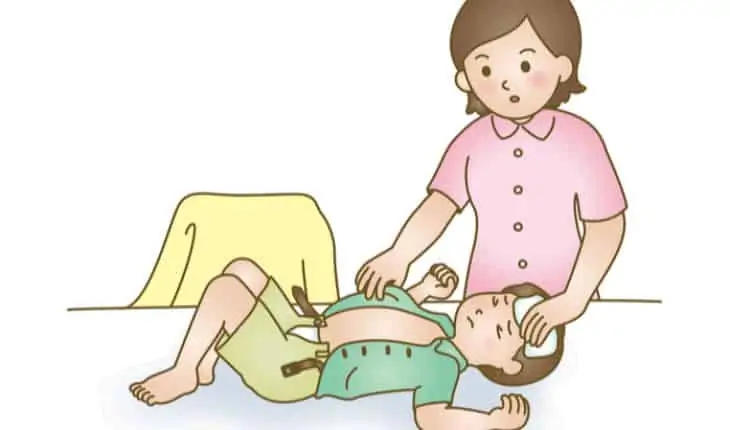Febrile convulsions are incredibly common in babies and small children. Fits or seizures are triggered by a rise in their core body temperature when they are unwell and feverish.
As many as one in 20 children may experience a febrile convulsion by the time they are 5 years old.
Febrile convulsions occur most frequently in children between 6 months and 5 years old. They’re petrifying to watch, but are not usually life-threatening and your child is likely to grow out of them with no long-term effects.
Why does it happen?
The exact cause of these seizures remains unknown. However, it is thought that fits are triggered by a child’s body temperature rising, usually due to an infection. Children are not as efficient as adults in maintaining their body temperature. A febrile convulsion in a child is often triggered if their temperature rises to over 38°. An extremely high temperature can cause seizures in adults as well, but the levels at which this happens are considerably higher, usually over 40°.
Febrile convulsions can happen to any child but there is also a hereditary link. If one or both parents experienced seizures as children their child is likely to suffer from them too.
An unusually hot day or hot environment will not lead your child to have a febrile convulsion. However if they are unwell, very hot weather can make it harder to reduce their core body temperature.
How to recognise a febrile convulsion
A seizure or convulsion may cause someone to thrash around violently as with a Grand Mal, tonic/clonic type of fit (this may start with a screaming sound as muscle spasm forces air out of their lungs). Or they may go rigid and experience uncontrollable spasms. Their arms and legs may start jerking or twitching. Their eyes may roll back and they may wet or soil themselves. They may or may not be aware of what is happening.
Febrile Convulsions and Seizures
How to help if someone is fitting
Seeing your child have a seizure is extremely frightening. If your child is unwell, try and lower their temperature. Take off any excess clothing, give them plenty to drink, open a window and give Paediatric Paracetamol (Calpol) or Paediatric Ibuprofen which will help them feel better and can help reduce their temperature.
A fit is not generally life-threatening. However, if the seizure continues for more than 5 minutes or a casualty has repeated seizures, it is vital to call an ambulance immediately. Whilst they are fitting they are unable to circulate oxygenated blood efficiently so it is important to stop the fit to prevent their vital organs being deprived of oxygen for too long.
If someone starts fitting:
- Keep them safe. Move things away from them to avoid injury, cushion their head, but do not pick them up or restrain them.
- They might bite their lips or tongue during the seizure, but you cannot intervene whilst they are fitting. Do not let anyone put anything in their mouth.
- Look at your watch and time the fit. If the fit lasts more than 3 minutes, it is advisable to phone the emergency services. It is also helpful to note the progress of the seizure and which parts of the body are affected. It may be helpful for diagnosis to film your child having the fit. This should only be done if it is your child or if you have parental permission to do so.
How to help after the seizure
The fit can last from seconds to minutes. They may go blue and could stop breathing for up to a minute. Once the fitting stops, they may be unconscious and breathing and should be rolled into the recovery position to keep the airway open. Following the convulsion the person may be confused and fractious.. It’s important to remain calm and reassuring. They will return to their normal selves. After a seizure, they are likely to be very sleepy. Following a first fit, children are usually admitted to hospital for observation and tests.
Once someone has experienced one febrile convulsion, they are prone to having further ones.
If your child has had a febrile convulsion, it is likely they will have another one if they are ill and their core temperature rises again. It is highly unlikely that they will have any lasting damage from the seizures and are likely to grow out of them by the time they are 5.
Visit firstaidforlife.org.uk for more information about our courses.
- What is a seizure? - 13th March 2025
- Febrile Convulsions and Seizures in Children - 13th March 2025
- Why women are less likely to receive CPR or survive cardiac arrest - 6th March 2025







